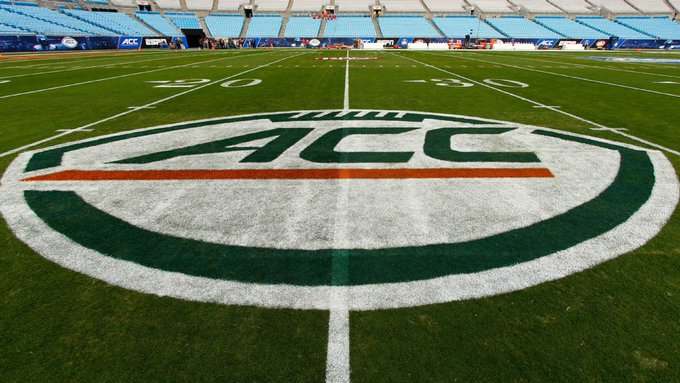
Atlantic Coast Conference media days are in full swing and reality has set in: Cal, Stanford and SMU are now members. Conference realignment is always wacky and wild, but those schools moving to join the ACC were perhaps the most head-scratching moves to date.
𝐓𝐇𝐄 𝐃𝐄𝐁𝐔𝐓🌲@StanfordFball x #AccomplishGreatness pic.twitter.com/hb4s5T6Trq
— ACC Football (@ACCFootball) July 23, 2024
“We’ll adapt or you’re not going to be relevant,” Stanford head football coach Troy Taylor said Tuesday at ACC media days, speaking about the increased travel and logistical issues from the move, per ESPN’s Andrea Adelson. Relevancy is the goal these days, but at what cost? Stanford and Cal made moves to save themselves as the Pac-12 crumbled around them, but the realities of those decisions are now setting in. Dallas-based SMU saw an opportunity to join a Power 4 conference and fueled its move through an invigorated donor base.
Keep in mind that Cal and Stanford aren’t just any universities. They are two of the top five best universities in the world, per usnews.com. Academics aren’t a walk in the park. It’s not easy to be a successful student-athlete at either school.
2024 ACC Kickoff: 𝐃𝐢𝐠𝐢 𝐄𝐝𝐢𝐭𝐢𝐨𝐧 pic.twitter.com/q8ky818MHT
— ACC Football (@ACCFootball) July 24, 2024
Stanford’s volleyball team will travel over 29,000 miles round trip to play this season. Eight times they will have a flight over 1,000 miles, and four times they will fly over 2,000 miles to or from their destination.
reporting live from ACC Kickoff for the first time: @StanfordFball 👋 pic.twitter.com/XBn3qrcsla
— ACC Football (@ACCFootball) July 23, 2024
In total, Stanford volleyball student-athletes will most likely miss more than two weeks of in-person class time. These have long been the realities of for college athletes, but they have never been this extreme. Cal’s football team plays five road games this season. Four of them are over 2,000 miles away and the fifth is nearly 1,500 miles from Berkeley. In total, the Golden Bears will travel more than 20,000 miles round trip for five games. That stacks up with NFL teams that are playing three or four more road contests in a season. Meanwhile, North Carolina — a new conference rival for Stanford and Cal — will travel less than 5,000 miles for its five road games.
Coach Wilcox on the competition in the ACC 😤@CalFootball x #AccomplishGreatness pic.twitter.com/gqb2EWSQwE
— ACC Football (@ACCFootball) July 24, 2024
Long term, it matters for several reasons. Traversing the country to play games wears on an athlete. The hotels all look the same and a plane or charter bus can only be so comfortable as a bed. Academics were made for the classroom, not hotel meeting rooms. Parents are supposed to be in the stands for support, not watching on television.
first ACC Kickoff check in from @CalFootball 🐻 pic.twitter.com/GzueJBzJKn
— ACC Football (@ACCFootball) July 24, 2024
Certainly, some recruits will reject Stanford and Cal for the reasons listed above. If parents can only see a handful of games, students miss weeks of class time and more time is spent in a gym or plane than a classroom, why attend? There are better options. These are the new realities for two of America’s most prestigious academic institutions, but the fight for relevancy and a piece of the pie knows no bounds — even if it takes you across time zones 2,500 miles away.
Story by Zach Wadley, Yardbarker
















